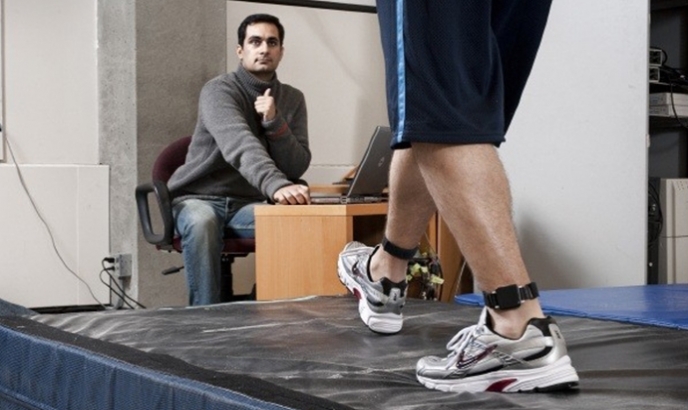How to calculate the intensity of exercise
When you exercise, are you exercising seriously or barely exercising? Exercising at the right intensity can help you get the most out of your physical activity, and ensure that you are not exercising more or less than necessary. Here's a look at what intense exercise means and how to get the most out of it.
Choose the appropriate degree of exercise
How strong are your exercises? The United States Department of Health and Human Services recommends that most adults follow these guidelines when exercising:
Aerobic activities. It took at least 150 minutes per week to perform medium-hard aerobic exercises - such as: brisk walking, swimming or mowing lawn; Or it took 75 minutes a week to perform high-intensity aerobic exercises - such as running or dancing in the open air. You can also combine medium to strenuous exercises. It is best to do this throughout the week. You can achieve more health benefits if you increase your exercise to 300 minutes or more of moderate aerobic activity per week.
Even the slightest physical exertion will benefit you, in addition to increasing the health benefits that you will gain from the accumulated activity throughout the day.
Strength exercises. Do strength exercises for all major muscles at least twice a week. You can also use free weights, weight lifters, or exercises that use your body weight, such as: rock climbing or heavy gardening. Or try cross-legging, plank or burst exercises. Use a ballast or resistance level strong enough to strain your muscles after 12 to 15 times of repetitive movements; The goal is to practice one set of each training.
The intensity of the exercise should generally be at a moderate or strong level to achieve the maximum benefit. For weight loss, the more intense or longer the activity, the more calories you burn.
The balance is still important. Excessive exercise can increase your risk of pain, injury, or exhaustion. Start at a slower pace if you are new to exercising. Gradually increase the frequency of exercises based on moderate or strong intensity.
Consider your reasons for exercising. Would you like to improve your fitness, lose weight, train for competition or a combination of all these possibilities? The answer to this question will help you determine the appropriate level of exercise intensity.
You have to be realistic, not to overdo it or do it quickly. Fitness is a lifelong commitment, not a jump to a finish line. Talk to your doctor if you have any medical problems or are unsure of the degree of exercise strength required.
Understanding the intensity of the exercise
A woman wears an activity tracker on her wrist. Open the popup dialog
Activity tracker
When making an effort, such as walking or biking, the intensity of your workout is related to how difficult the activity is for you. The intensity of your workout also appears in your breathing, your heart rate, whether you are sweating or not, and how tired you are in your muscles.
There are two basic ways to measure exercise intensity:
How you feel. The intensity of the exercise is a subjective measure of the difficulty of the physical activity that you feel during this physical effort. Your level of effort may be different from what someone else feels while doing the same exercise. For example, a jogging exercise that you feel is difficult can be easy for someone who is more fit.
Your heart rate. Your heart rate offers a more objective view of exercise intensity. Generally, the higher the heart rate during physical activity, the higher the intensity of the exercise.
Your perceived effort may not always be similar to your individual heart rate, and depends on the individual. But it can be a general guide to measure your level of effort. If you think you work hard, your heart rate is likely to be higher than usual.
You can use any method to measure the intensity of the exercise. If you like technology, you can check your heart rate using an activity tracker that includes heart rate monitoring. If you feel that you are in harmony with your body and level of effort, you are likely to do a good job without a monitor.
Measure the intensity of the exercises according to how you feel
Here are some methods that will help you judge the intensity of your exercises.
Medium degree for workouts
Medium activities seem difficult. Here are indications that your training level is average:
Your breathing accelerates, but your breath does not stop.
Mild sweating about 10 minutes after the start of activity.
You can discuss, but you cannot sing.
Intense exercise intensity
Doing intense exercise makes you feel challenged. Here are indications that your degree of practicing exercises on a violent level:
Your breathing is deep and fast.
Your body exposes to sweat after a few minutes of activity.
You can only speak a few words without pausing to catch your breath.
Stress yourself
Beware of pushing yourself too hard. If you have shortness of breath, feel pain, or have been unable to exercise for the period that you were planning, then your exercise intensity may be higher than your fitness level allows. Slow down and build up gradually.
 Arabic
Arabic
 English
English







يوسف احمد
07 Jan2021 08:05 pm
خمس نجوم استفدت جدا
Magdi Elshikh
19 Apr2020 06:04 pm
Kamal
22 Apr2020 10:59 am
غير مفيدة